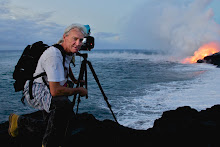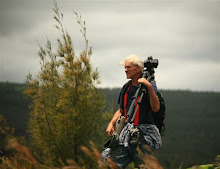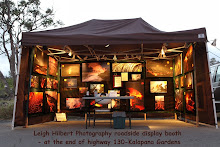 ~ Full Moon-Feb27-2010 -- Above a Tsunami survivor: the Island of Hawaii ~
~ Full Moon-Feb27-2010 -- Above a Tsunami survivor: the Island of Hawaii ~(Click on the image for a larger size)
I was hoping to post photos of waves sweeping over roads or other exciting (non-life threatening) tsunami images, but we were spared the anticipated 9 to 12-foot waves forecast to hit here at 11:00 Saturday the 27th of February - generated from the devastating 8.8 magnitude Chilean earthquake from the day before; but we did get a tsunami beginning about 11:20 AM.
The shores directly in front of my house were the first ones in all of Hawaii affected by the incoming waves, next was Hilo Bay. What we saw was a reseeding of water, followed by a rush of water back in that looked like a super fast high-low tidal event: stronger each time for the first four waves, then decreasing after that for nearly an hour. For awhile it was like, “Oh! This IS happening!”… But we could soon see it was not going to become serious.
Watch the water and reefs as these sped up images show the first few tsunami surges in this poor quality home web cam at a Hilo hotel lanai overlooking Coconut Island in Hilo Bay shows a time-lapse of this event
Otherwise the most exciting part was the blaring tsunami warning sirens waking us all up at 6:00 AM, and repeated every hour until 11:00AM. It was an absolutely perfect Hawaiian weather day as well. Surfing seemed the logical plan for the day except the ocean currents were majorly messed up for safe paddling out there.
So the only photo I took on this infamous event day/night was this Full Tsunami Moon out my bedroom window.
LAVA ACTIVITY
Magma pressures beneath Halema’uma’u & Pu`u O`o crater’s has dropped considerably in the past few days, resulting in minimal views of active lava being seen either in the day or after dark. This is true for both the Hawaiian Volcanoes National Park’s Kilauea pit-crater lava vent (the Halema’uma’u), as well as sightings of lava from the Hawaii County Civil Defense viewing area’s off the end of highway 130 near Kalapana.
Until a return of inflationary magma pressure within the volcano I would expect only moderate glowing of lava at either active location after dark; weather permitting. If you have never seen lava glowing colors after dark then both venues may be worth trying to see.






+Leigh+Hilbert+Photography_D69D0201.jpg)
















































